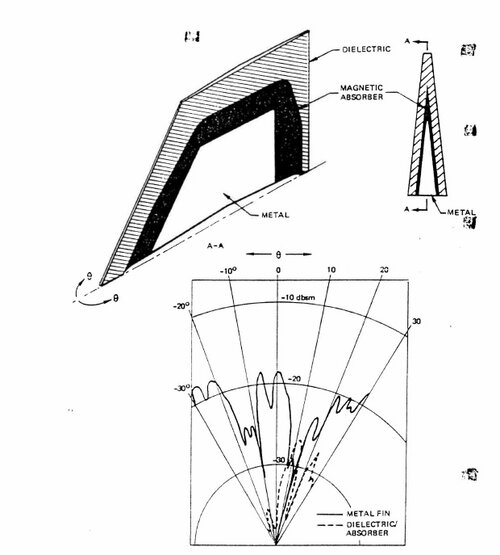If F-35 as stealthy as it's advertised, all these marbles/insects and other cool stories for tax payers and housewives, then nothing will help to detect it at more or less significant range. Just because at the end it all depends on RCS and radar's power and you can't just up the power of radar by 10 times, to make it viable and useful.The deal with S-400 is different in the sense that country with both S-400 and F-35 can improve the S-400 by adding the exact signature characteristic
General stealth technology and techniques
- Thread starter chuck4
- Start date
-
- Tags
- stealth stealth fighter
tequilashooter
ACCESS: Top Secret
- Joined
- 1 January 2021
- Messages
- 699
- Reaction score
- 895
To me it would be absolutely hilarious in more ways than one if China ever decides to make an order for Su-57s(once there will be enough for Russia). I know plenty of people that exaggerate features the Su-57 doesn't have, but such a purchase might turn stealth comparisons in the past into rather miniscule value comparisons. Hope China still likes purchasing flankers.
Unfortunately, just like fundamental physics, these radars still exist and do their job well, whether you interested in them or not is irrelevantExcuse me. They would have said they would have freed up a lot of time before. I am not interested in radio telescopes. They are not suitable for the tasks mentioned.
You have confused cause and effect. Come on, for a minute, I'll come to your fantasy world of pink ponnies. After all, only there, perhaps, the metomorphoses you are talking about. I will specifically make a reservation that I will obey the rules of the fairy world. Well, so that my colleagues do not laugh at me.
You, in a fabulous country, have reduced your total dwell time by 10 times. Which caused a decrease in the range 1.78 times. The question is, how will we compensate? Increase the gain by 10 dB again?
And now our antenna is already 9.3 meters in diameter. That is, we have almost lost the mass and dimensional advantage. And our beam width is already 0.04 square degrees. (120 * 20 / 0.04) * 0.002 = 120 seconds. I told you that antenna theory is all about compromises. You can again reduce the time, again compensate for gain. And so in a circle.
Let's come to an agreement, I'm going to get out of your fantasy world, and in my real world, I no longer want to listen to this "antenna nonsense".
Secondly, I love that you didn't mentioned increasing the transmitting power
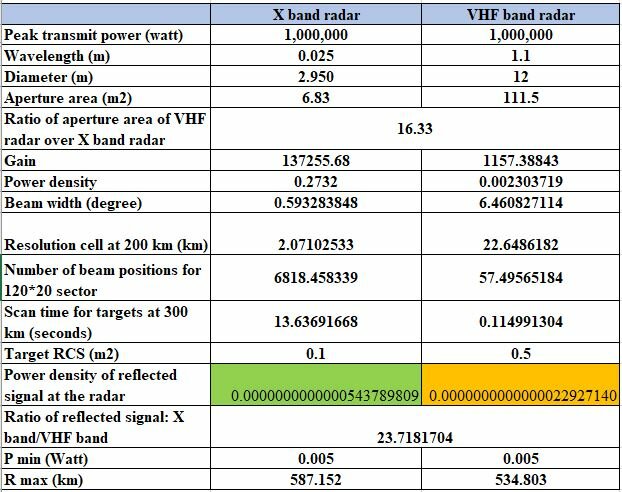
funny that the real engineer who working on actual stealth aircraft doesn't have any issue with the balls , marble comparison. In fact, they even used these object in one of their test . However you do, but let get real, it is not because you care about accuracy, it is simply because these comparison doesn't fit your narrativeNo, no, no. I am not engaged in applied electrodynamics in arnitology. I had enough balls and peas. Then hares, elephants, bees and other representatives of the fauna will go.
So you actually copied from Wikipedia ?.I do not have this book at hand. If you have one, take a picture of page 75 and post it here. I will be grateful.
The discrepancy between 2 number is small, can be easily explained that 1 of them is lowest value and the other one is the average frontalIt's just great. This proves once again my thesis that data on EPR abroad differ from statement to statement. They could not even agree and name one number. Who to believe now?
Secondly, did you forget the same discrepancy also happen in your own source?
For example: in your first manual the RCS of F-22 in the S-200 manual is 0.2 m2, in the S-125 manual it is 0.1 m2, in the Ukraine study, it is 0.5 m2
So what? They were able to later verified the result by glue the actual ball to the model and test the actual aircraft against HAWK radarReread it again. Yes, their result turned out to be 4 dB better due to the heated air. And they knew the reason. But this did not prevent them from taking these data to the generals.
while you are in service, there are quite a bit of incentive to lie for propaganda and career reasonIt's one thing to lie in the service, another thing to retire in your memoirs. But I don't insist.
It was not me who posted the document on the S-200. And not F-22 in it, but ATF. I will assume that in Russia they knew about the RCS requirements for this program in 1991. But I do not insist. This is just a guess.
ATF program have two different aircraft, so at best, they made some guess.
Please be kind. Take a golf ball and calculate its RCS at a wavelength such as 14.1 cm. No need for long conversations, screenshots of books. Just a number.
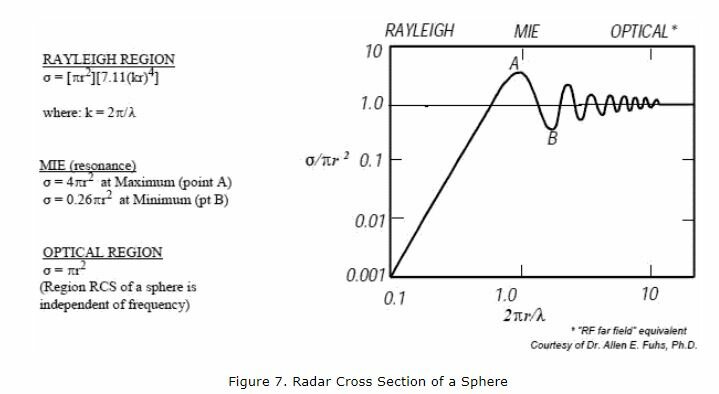
Let me now invite you to my real world. So, the RAM, as indicated above, was also used in other studies. For example, in the RCS study of an airplane wing. People first examined this part and got peak values of about 2 m2. And with RAM, almost two orders of magnitude less.
I have the same question. Where did the energy go if the RAM does not absorb. Let me remind you that you are in the real world, and the law of conservation of energy is valid here.
View attachment 648961
If only you take my advice and spend some minutes to learn what is wave transmission at boundary condition then you wouldn't have embarrassed yourself this much.
Like I explained to you before:
All type of RAM always have two separate mechanism:
1-Getting the radar wave to entered the RAM: shown by the reflection coefficient- This is affected by the impendence property, preferably you want this impendence value to match the air space value which is 377 ohms.
2-Absorb the energy of the radar wave while it traveling inside the RAM: shown by loss. -This is affected by the permittivity and permeability of the material.
Let say you have a radar beam hitting your RAM, a 0.1 reflection coefficient mean 10% of the beam reflected away right from the top RAM surface and 90% entered the RAM to be absorbed. The absorption (loss) then can be -10 db, -20 dB, normally, the thicker your RAM, the higher this number. After radio wave pass through the RAM layer and loss its energy then it will reflect a second time when it hit the metal surface underneath the RAM.
If F-35 isn't stealth, these countries will find out almost immediately after they got the aircraft then they can immediately cancel the bulk order.But you can't have F-35 if you're not completely loyal to US. That's why Turkey or India will never get F-35, they didn't obey to US taboo on S-400. At the same time those who loyal and got F-35 will never tell something that contradicts to US advertising...because they don't want to make US sad and become another one Turkey. :
This is a classic conspiracy of silence.
There are many more things important to a fighter other than just its signature such as radar, ESM, Jamming system, communication system. Every single one can be exploited when you know the exact details of them: characteristic such as waveform, lpi mode, detection range, processing speed ..etc.If F-35 as stealthy as it's advertised, all these marbles/insects and other cool stories for tax payers and housewives, then nothing will help to detect it at more or less significant range. Just because at the end it all depends on RCS and radar's power and you can't just up the power of radar by 10 times, to make it viable and useful.
And knowing the exact signature characteristic is also much easier to improve your own NCTR system, especially in present of decoys and jamming
LMFS
ACCESS: Top Secret
- Joined
- 19 March 2019
- Messages
- 533
- Reaction score
- 880
The case is very straightforward isn't it? With the RCS published the S-400 can only detect the F-35 at ca. 20 km, in trivial range for most bombs, PGM and missiles you can imagine. No need for esoteric explanations and acronym salads, unless...There are many more things important to a fighter other than just its signature such as radar, ESM, Jamming system, communication system. Every single one can be exploited when you know the exact details of them: characteristic such as waveform, lpi mode, detection range, processing speed ..etc.
And knowing the exact signature characteristic is also much easier to improve your own NCTR system, especially in present of decoys and jamming
tequilashooter
ACCESS: Top Secret
- Joined
- 1 January 2021
- Messages
- 699
- Reaction score
- 895
Seeing this entire thread I love Ronny he seems fun at parties.
@LMFS
"With the RCS published the S-400 can only detect the F-35 at ca. 20 km, in trivial range for most bombs, PGM and missiles you can imagine."
390(.00001 times 3) ^ .25 = 28.8632293752kms are you referring to EW being used?, Well shit its invisible at this point
@LMFS
"With the RCS published the S-400 can only detect the F-35 at ca. 20 km, in trivial range for most bombs, PGM and missiles you can imagine."
390(.00001 times 3) ^ .25 = 28.8632293752kms are you referring to EW being used?, Well shit its invisible at this point
Last edited:
Yes, only they have nothing to do with the topic under discussion.Unfortunately, just like fundamental physics, these radars still exist and do their job well, whether you interested in them or not is irrelevant
In the first sentence, I told you that you confused cause and effect.Secondly, I love that you didn't mentioned increasing the transmitting powerafter all the main purpose of dwell time is to increase energy on target, a radar with higher peak power can scan with lower dwell time
Plus, you move away from the initial conditions. At the beginning, you said that you need to increase only the gain, and it is due to the amplification of the x-band radar that it will be compared with the long-wave radar. Then you reduce the dwell time. And today we got to the increase in power. And I told you about the power at the very beginning. That it is not always possible to increase it.
I asked you not to carry your fantasies from the fairy-tale world! I’m not even funny, but sad.I already used the same dwell time for both radar at the start, no need to increase gain to compensate
First, you have megawatts of power. Well that's okay. There is probably a lot of energy in the fairytale world.
Secondly, your range is indicated more than 500 km, and dwell time = 0.002 s. A signal with a distance of 1000 km (500 to the target and 500 back) will pass in 0.0033. In the real world, the speed of light is constant.
I no longer ask, I just beg, do not bring things from the fairy world to our real world. They don't work here.
You attribute to me what I did not say and did. This is a bad sign. I have listed Russian sources that all call the numbers of the same order. And the most important thing is called numbers, not abstractions in the form of balls and peas.Just like when you taken Davidenko and Poghosyan word as absolute truth because "they are expert" but changed your opinion immediately when it come to Ben Rich comment
Is this on Wikipedia too? Let's go read it. Thank you.So you actually copied from Wikipedia ?.
Did not guess.For example: in your first manual the RCS of F-22 in the S-200 manual is 0.2 m2, in the S-125 manual it is 0.1 m2, in the Ukraine study, it is 0.5 m2
Let me guess, the discrepancy is only a problem when it doesn't support your narrative
And the fact that two air defense complexes can operate in different wavelength and different detection radars (dm and m) can be assigned to them, did you not take into account?
And the Ukrainian source is of little concern to me.
Just a fact of deception!So what? They were able to later verified the result by glue the actual ball to the model and test the actual aircraft against HAWK radar
You couldn't.Give a Man a Fish, and You Feed Him for a Day. Teach a Man To Fish, and You Feed Him for a Lifetime. So I will be kind and tech you how to calculate RCS of a sphere/ball/marble. You don't need my help, just put number in
Many words again.You making a strawman argument is funny and said at the same time, it is like looking at someone trying to argue that 10 can't be divided by 3 because he don't know about real number
If only you take my advice and spend some minutes to learn what is wave transmission at boundary condition then you wouldn't have embarrassed yourself this much.
Like I explained to you before:
All type of RAM always have two separate mechanism:
1-Getting the radar wave to entered the RAM: shown by the reflection coefficient- This is affected by the impendence property, preferably you want this impendence value to match the air space value which is 377 ohms.
2-Absorb the energy of the radar wave while it traveling inside the RAM: shown by loss. -This is affected by the permittivity and permeability of the material.
Let say you have a radar beam hitting your RAM, a 0.1 reflection coefficient mean 10% of the beam reflected away right from the top RAM surface and 90% entered the RAM to be absorbed. The absorption (loss) then can be -10 db, -20 dB, normally, the thicker your RAM, the higher this number. After radio wave pass through the RAM layer and loss its energy then it will reflect a second time when it hit the metal surface underneath the RAM.
The question is the same. Where did the energy go if it was not absorbed by the RAM?
Or is RAM already being absorbed ?
Detection range is proportional to forth root of RCSThe case is very straightforward isn't it? With the RCS published the S-400 can only detect the F-35 at ca. 20 km, in trivial range for most bombs, PGM and missiles you can imagine. No need for esoteric explanations and acronym salads, unless...There are many more things important to a fighter other than just its signature such as radar, ESM, Jamming system, communication system. Every single one can be exploited when you know the exact details of them: characteristic such as waveform, lpi mode, detection range, processing speed ..etc.
And knowing the exact signature characteristic is also much easier to improve your own NCTR system, especially in present of decoys and jamming
So if it can detect target with RCS of 4 m2 from 480 km then one with RCS of 0.0015 m2 will be detected from 66 km
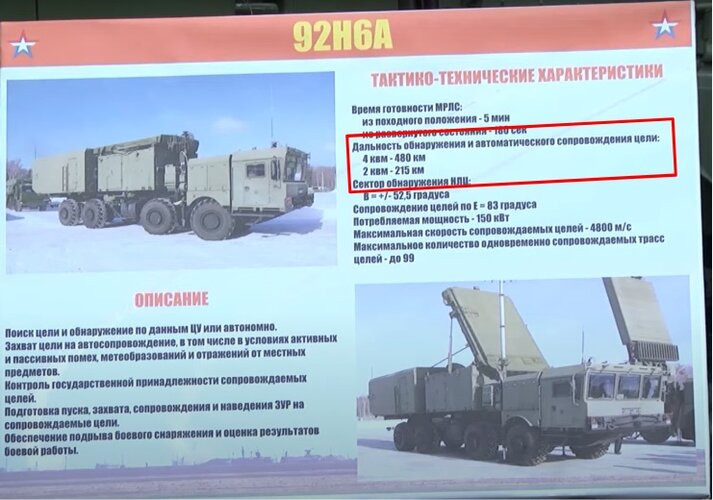
But RCS of these aircraft are not equal in all direction, even for stealth aircraft, there are scattering lobes with higher scattering value, if you know the exact location of there lobes, you can arrange your fire control radar separation distance so that there are higher chance your radar will view the stealth aircraft from these aspect.
RCS also change with frequency, just because the RCS is 0.0015 m2 at X-band doesn't mean it is the same in S-band
Let say RCS increased from 0.0015 m2 in X-band to 0.005 m2 in S-band, the detection range here is about 89 km
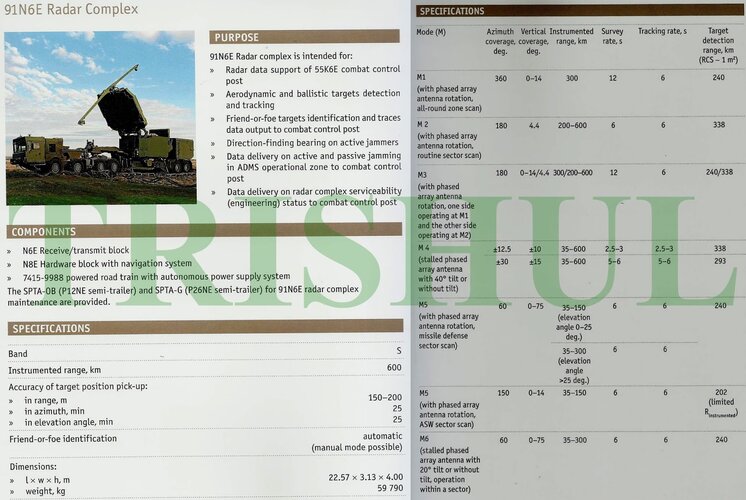
Secondly, there are also different radar band like those VHF one, if RCS of these stealth aircraft is 0.1 m2 or 0.5 m2 even in X-band, then there is practically no need for these so called "anti stealth" radar.
Last edited:
No, I didn't move away from initial conditionIn the first sentence, I told you that you confused cause and effect.
Plus, you move away from the initial conditions. At the beginning, you said that you need to increase only the gain, and it is due to the amplification of the x-band radar that it will be compared with the long-wave radar. Then you reduce the dwell time. And today we got to the increase in power. And I told you about the power at the very beginning. That it is not always possible to increase it.
I only intended to show you that, if these RCS value are exactly as you claimed, then X-band radar will detect stealth targets from longer range than VHF-radar, all the while being much smaller in size.
You said the X-band radar scan will take too long and then you confused between the free space basis loss and atmospheric attenuation. After spending several post explained to you the different between free space basis loss and atmospheric attenuation, I calculated the dwell time for you and they clearly not so insane. At that point you said I cheated because I didn't use the same 0.02 seconds dwell time as you and there is no radar with that low dwell time like I used in my calculator.
After I showed you the same dwell times in studies, you start to change the topic again?
Firstly, do you know what is the peak power of SPY-1? 6 MegawattI asked you not to carry your fantasies from the fairy-tale world! I’m not even funny, but sad.
First, you have megawatts of power. Well that's okay. There is probably a lot of energy in the fairytale world.
Secondly, your range is indicated more than 500 km, and dwell time = 0.002 s. A signal with a distance of 1000 km (500 to the target and 500 back) will pass in 0.0033. In the real world, the speed of light is constant.
I no longer ask, I just beg, do not bring things from the fairy world to our real world. They don't work here.
Secondly, did you see the instrumental range of 300 km for the scan time?
There is nothing abstractions about balls, marble....etcYou attribute to me what I did not say and did. This is a bad sign. I have listed Russian sources that all call the numbers of the same order. And the most important thing is called numbers, not abstractions in the form of balls and peas.
Especially in case of ball because as I have explained to you, ball was used to measure RCS because their radar scattering is the same from all direction and independent of frequency in optical region
Is this on Wikipedia too? Let's go read it. Thank you.
Did not guess.
And the fact that two air defense complexes can operate in different wavelength and different detection radars (dm and m) can be assigned to them, did you not take into account?
The pilot might be referring to fighter radar while the proposal clearly stated detection range by AEW and radar of AEW such as A-50 work in L-band
Just a fact of deception!
You couldn't.
Golf ball: diameter is 42.6 mm = 0.0426 meters, so radius is 0.0213 meter
RCS in optical region = Pi* (0.0213)*(0.0213) = 0.0014 m2
But wavelength such as 14 cm is in Rayleigh region as respect to the ball, since the wavelength is greater than the ball itself.
So RCS = Pi*r^2*7.11*((2*pi/wavelength)*r)^4) = 0.008 m2
I suggest that you open a physic book about wave at dielectric boundary before you embarrass yourself further.Many words again.
The question is the same. Where did the energy go if it was not absorbed by the RAM?
Or is RAM already being absorbed ?
As I said before, RAM design have to solve 2 problems
The first is to get the wave to entered the RAM instead of reflecting from the front surface => matching the impendence with free space value of 377 ohms
The second is the absorb the wave energy while it pass through the RAM => increasing the permittivity and permeability
Once the radio wave entered the RAM if the energy is not absorbed by the RAM then it either pass through the RAM or reflected back from what underneath the RAM layer.
LMFS
ACCESS: Top Secret
- Joined
- 19 March 2019
- Messages
- 533
- Reaction score
- 880
So the mission you set yourself now is to prove how bad the F-35 stealth is?So if it can detect target with RCS of 4 m2 from 480 km then one with RCS of 0.0015 m2 will be detected from 66 km
What if the range taken from the sheet is 215 km vs 2 sqm? What if the RCS of the F-35 is 0.0001 sqm, as some officials indicated by saying the RCS of the F-35 was even lower than that of the F-22? Or according to other people here, -50 dBsm? For -40 dBsm the range would be less than 20 km already, imagine for -50 dBsm...
Look at the calculations here:
Or this from Aviation Week:
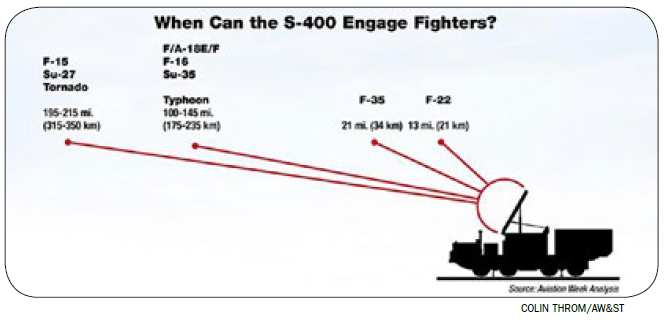
So yes these are the values that have been published by the West. 20 km or 34 km, any cheap bomb can reach the S-400 in little time at that range and reaction against ARMs would be almost impossible.
You have changed a lot of parameters to get closer with longwave radar. But in the real world, this is not always possible. This proves the absence of surveillance radars with such parameters in the real world. They exist only in your fantasies and in your Excel. I could also go your way. And fantasize a long-wave radar with nonexistent parameters. But fantasizing is not interesting to me. I am in the real world. And I play fair.No, I didn't move away from initial condition
I only intended to show you that, if these RCS value are exactly as you claimed, then X-band radar will detect stealth targets from longer range than VHF-radar, all the while being much smaller in size.
Only this is a pulse radar with an output power of less than 60 kW.Firstly, do you know what is the peak power of SPY-1? 6 MegawattI guess that radar doesn't exist in real life?

I have already realized that in a fairyland, you cannot believe your eyes. An angle of 50 degrees can turn into 65, and the range more than 500 km turns into 300 km.Secondly, did you see the instrumental range of 300 km for the scan time?
Take and calculate the RCS of a golf ball in three ranges (cm, dm, m). And you get different numbers. Moreover, they will differ by orders of magnitude. So when I hear about the RCS of a golf ball, which one should I get? Let me remind you that I am in the real world, and I do not possess telepathic abilities. I can't get into the speaker's mind to find out what he means.There is nothing abstractions about balls, marble....etc
Therefore, it is a complete abstraction, as colleagues correctly noted. For housewives.
I am not linking to wikipedia. I refer to the book of also a respected pilot.I thought you love accuracy?. As soon as an official source doesn't follow your narrative, then suddenly Wikipedia is more reliable than actual SR-71 pilot and USAF classified proposal?
So, I don’t want to think out for the speakers. Russian sources accurately indicate both the angle and the frequency range. And not bare numbers with which you still need to fantasize. Well, at least there is a number, and not just another ball or peas.So you can't acknowledge that maybe the SR-71 pilot and the USAF proposal were referring to different frequency as well?
The pilot might be referring to fighter radar while the proposal clearly stated detection range by AEW and radar of AEW such as A-50 work in L-band
And by the way, I can accept that the RCS SR-71 is 2 m2. I checked against my papers. for the P-12 radar, it is the EPR of two MiG-17s. MiG-17 is a typical target with RCS 1m2.
But, A-11, was valued as 10 m2.
So, yes! I'm a little confused. I admit my mistake.
I told you that there can be no absolute black body. And even with RAM it will reflect. But you decided to be smart. And for a week now, you've been looking for "black cats in dark rooms".I suggest that you open a physic book about wave at dielectric boundary before you embarrass yourself further.On the other hand, maybe you already realized that you are wrong but keep playing dumb
As I said before, RAM design have to solve 2 problems
The first is to get the wave to entered the RAM instead of reflecting from the front surface => matching the impendence with free space value of 377 ohms
The second is the absorb the wave energy while it pass through the RAM => increasing the permittivity and permeability
Once the radio wave entered the RAM if the energy is not absorbed by the RAM then it either pass through the RAM or reflected back from what underneath the RAM layer.
No, the problem is with you. You said stupidity, and now you cannot even answer a simple question. To save face, go away from the answer and try to bombard me with theory. And all that must be admitted that this RAM absorbs.
Last edited:
If the RCS is so small as they say, then the F-35 becomes simply "imbalance" and the air defense is useless. And with the mass production of the F-35, conflicts are inevitable in the near future. But air defense systems are being bought. Not stupid China, India, Iran, etc. Why are they spending huge amounts of money (Turkey - $ 2.5 billion) on useless air defense systems?
I didn't edit any parameter of the X-band radar for it to get closer to the VHF radar in the example.You have changed a lot of parameters to get closer with longwave radar. But in the real world, this is not always possible. This proves the absence of surveillance radars with such parameters in the real world. They exist only in your fantasies and in your Excel. I could also go your way. And fantasize a long-wave radar with nonexistent parameters. But fantasizing is not interesting to me. I am in the real world. And I play fair.
I used the same parameter for the two radar: same out put, same minimum detectable signal, same dwell time, same target
The only thing different is the size, the X-band radar is significantly smaller because it use shorter wavelength.
Wrong, you are confused between peak power and average powerOnly this is a pulse radar with an output power of less than 60 kW.
Peak power of SPY-1 is about 4-6 MW
Average power of SPY-1 is from 58-77 kW depend on version
That huge different between the peak power of the pulse and the average power in a pulse radar is because pulse radar need to wait for pulse to go back to measure distance, in short, they don't transmit all the time. So the average power is the peak energy of individual pulse/time for full cycle
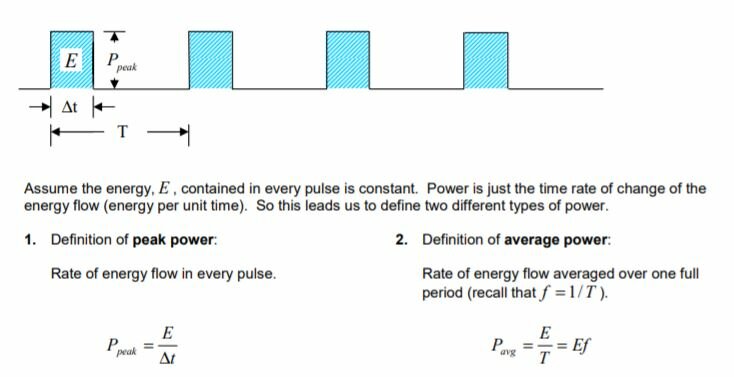
Secondly, you don't even need to reach MW power to have micro second dwell time
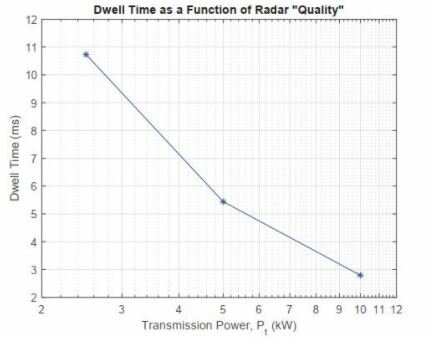
I have already realized that in a fairyland, you cannot believe your eyes. An angle of 50 degrees can turn into 65, and the range more than 500 km turns into 300 km.
Secondly, look back at the first photo where I posted it, you will see the scan time is for 300 km instrumental range and 20*120 sector.
Take and calculate the RCS of a golf ball in three ranges (cm, dm, m). And you get different numbers. Moreover, they will differ by orders of magnitude. So when I hear about the RCS of a golf ball, which one should I get? Let me remind you that I am in the real world, and I do not possess telepathic abilities. I can't get into the speaker's mind to find out what he means.
Therefore, it is a complete abstraction, as colleagues correctly noted. For housewives.
I am not linking to wikipedia. I refer to the book of also a respected pilot.
So, I don’t want to think out for the speakers. Russian sources accurately indicate both the angle and the frequency range. And not bare numbers with which you still need to fantasize. Well, at least there is a number, and not just another ball or peas.
Firstly, I didn't say anything stupid. I am trying to teach you something very fundamental of radar absorbing material that you misunderstood.I told you that there can be no absolute black body. And even with RAM it will reflect. But you decided to be smart. And for a week now, you've been looking for "black cats in dark rooms".
No, the problem is with you. You said stupidity, and now you cannot even answer a simple question. To save face, go away from the answer and try to bombard me with theory. And all that must be admitted that this RAM absorbs.
Secondly, let me ask you something, what do you think this graph shows?
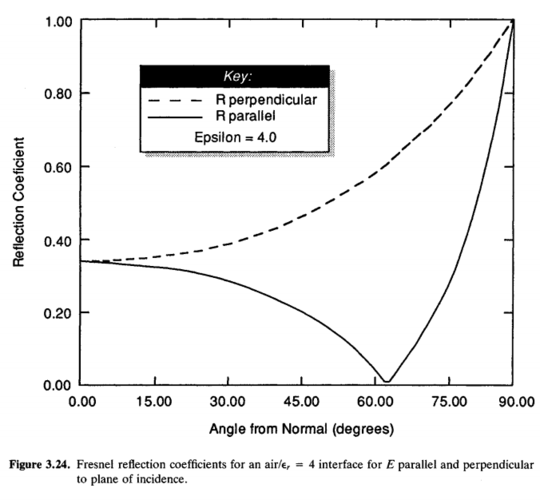
So the mission you set yourself now is to prove how bad the F-35 stealth is?So if it can detect target with RCS of 4 m2 from 480 km then one with RCS of 0.0015 m2 will be detected from 66 km
What if the range taken from the sheet is 215 km vs 2 sqm? What if the RCS of the F-35 is 0.0001 sqm, as some officials indicated by saying the RCS of the F-35 was even lower than that of the F-22? Or according to other people here, -50 dBsm? For -40 dBsm the range would be less than 20 km already, imagine for -50 dBsm...
Look at the calculations here:
Or this from Aviation Week:
View attachment 649076
So yes these are the values that have been published by the West. 20 km or 34 km, any cheap bomb can reach the S-400 in little time at that range and reaction against ARMs would be almost impossible.
I'm saying two simple facts:
1- No aircraft have the same RCS from all aspect, even if the RCS is -40 or -50 dBsm from the front, that doesn't mean you get the same value from 30 or 60 degrees offside. The scattering lobes are important, but they only help to a certain extend because you can't know the shape of the internal RAS.
2- Nothing have the same RCS at all frequency, even if the RCS in X-band is -40 or -50 dBsm, that doesn't mean you got the same value in S-band or VHF band. But how much these value change, we don't know, unless we have the actual aircraft to put on the RCS test pole
LMFS
ACCESS: Top Secret
- Joined
- 19 March 2019
- Messages
- 533
- Reaction score
- 880
I agree, but I just know a way a plane can fly towards an S-400 radar, and that is pointing its nose at it, which obvioulsy happens to be the most optimized aspect in any strike stealth plane so it should coincide with the -40 or -50 or whatever dBsm. As to the frequency effects, I agree again, so you don't need to convince me, better tell about them to the Western propaganda apparatus spreading BS like the graph I linked above and which are responsible for the fairy tales most people believe about stealth.I'm saying two simple facts:
1- No aircraft have the same RCS from all aspect, even if the RCS is -40 or -50 dBsm from the front, that doesn't mean you get the same value from 30 or 60 degrees offside. The scattering lobes are important, but they only help to a certain extend because you can't know the shape of the internal RAS.
2- Nothing have the same RCS at all frequency, even if the RCS in X-band is -40 or -50 dBsm, that doesn't mean you got the same value in S-band or VHF band. But how much these value change, we don't know, unless we have the actual aircraft to put on the RCS test pole
I don't think anyone seriously think the RCS of any aircraft is the same at all frequency, even the most pro western guy. Most people who have reasearch stealth long enough should have seen the radar scattering graph at least once.I agree, but I just know a way a plane can fly towards an S-400 radar, and that is pointing its nose at it, which obvioulsy happens to be the most optimized aspect in any strike stealth plane so it should coincide with the -40 or -50 or whatever dBsm. As to the frequency effects, I agree again, so you don't need to convince me, better tell about them to the Western propaganda apparatus spreading BS like the graph I linked above and which are responsible for the fairy tales most people believe about stealth.I'm saying two simple facts:
1- No aircraft have the same RCS from all aspect, even if the RCS is -40 or -50 dBsm from the front, that doesn't mean you get the same value from 30 or 60 degrees offside. The scattering lobes are important, but they only help to a certain extend because you can't know the shape of the internal RAS.
2- Nothing have the same RCS at all frequency, even if the RCS in X-band is -40 or -50 dBsm, that doesn't mean you got the same value in S-band or VHF band. But how much these value change, we don't know, unless we have the actual aircraft to put on the RCS test pole
i just don't believe that notion that frontal RCS of stealth aircraft is 0.1-0.5 m2
The essence of the whole dispute is not that someone denies low visibility (at least in this section). And besides, what real number of zeros has this or that aircraft in its low visibility numbers.
And also in the database of sources for one figure or another.
And also in the database of sources for one figure or another.
Я просто не верю в то, что лобовая УПР малозаметного самолета составляет 0,1-0,5 м2
Well, this is more about the average than the foreground.
If you read the thread from start, Dev basically believe that 0.1-0.5 m2 is the lowest frontal value in X band.Well, this is more about the average than the foreground.
LMFS
ACCESS: Top Secret
- Joined
- 19 March 2019
- Messages
- 533
- Reaction score
- 880
The guys at aviation week missed that one it seems, as everyone else talking about mosquitoes, peas and pebbles as Dev has made abundantly clear. There is no such sophistication in the Western media, even specialised one like the example above. It is good that you know, but you are not the average Joe.I don't think anyone seriously think the RCS of any aircraft is the same at all frequency, even the most pro western guy. Most people who have reasearch stealth long enough should have seen the radar scattering graph at least once.
i just don't believe that notion that frontal RCS of stealth aircraft is 0.1-0.5 m2
As to the frontal RCS, it also seems high to me but I have no way of knowing for sure. We need to keep in mind that a given RCS reduction value may be too little to be tactically relevant in a certain situation, but may be very significant if for instance EW is heavily employed, and I cannot imagine a confrontation between high level powers where that would not be the case.
there are probably people who think stealth aircraft have the same RCS in all directions and frequency but they are the same type of people who would think there are radar that can distinguish human face from 500 km and know what type of weapon inside aircraft weapon bay. I don't think their opinions are important.The guys at aviation week missed that one it seems, as everyone else talking about mosquitoes, peas and pebbles as Dev has made abundantly clear. There is no such sophistication in the Western media, even specialised one like the example above. It is good that you know, but you are not the average Joe.
As to the frontal RCS, it also seems high to me but I have no way of knowing for sure. We need to keep in mind that a given RCS reduction value may be too little to be tactically relevant in a certain situation, but may be very significant if for instance EW is heavily employed, and I cannot imagine a confrontation between high level powers where that would not be the case.
Firstly, as indicated very clear in the document that you cited, the value is due to surface/creeping wave return, which is is a dominant factor when the wavelength is close to the size of the object (mie region) they start to curve around the object .This is very different from specular return. That also why VHF radar are more effective against stealth aircraft than higher frequency radar. The tiny metal fin of SRAM is especially vulnerable to this effect even in X-Band because it is much smaller than the horizontal/vertical tail of fighterThe RCS of the tail fin of the SRAM rocket is -35 dB. Using composite materials and RAM.
This fin will fit in two hands, and its front area is very small.
View attachment 649214

And how can such an object have an EPR of -40 or even -50 dB?

If you look at the chart just above that one for the fin same document, the much bigger uncoated metal wing actually have smaller RCS than the fin in certain aspect
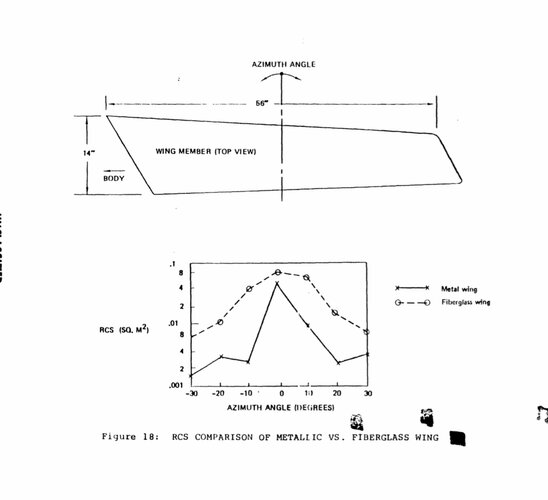
Secondly, the way creeping wave return contribute to RCS is by curving around the trailing edge of the wing and then traveling in the perpendicular direction to the angle of the trailing edge ,that why not only the leading edge of stealth aircraft wing need to stay away from making a 90 degree angle with the threat but their trailing edge as well, it is also the reason why all the panel on stealth fighter and bomber are serrated, so that the traveling wave doesn't go Straight back. On the other hand, the trailing edge of SRAM fin basically make a perpendicular line with the frontal threat
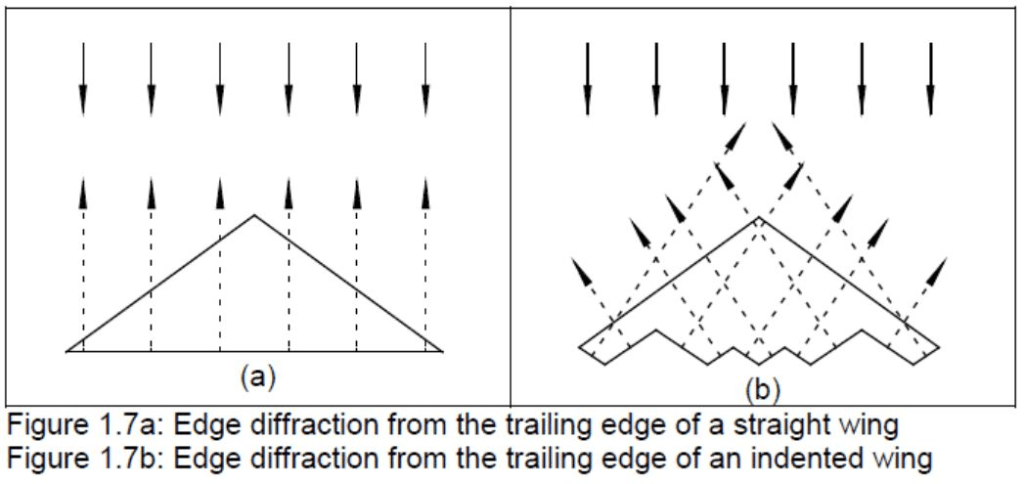
Thirdly, the effect of surface wave return can also be reduce by applying surface wave RAM and edge treatment, the wider the edge treatment as measured in wavelength, the higher magnitude of surface wave that they can absorb. A small fin of SRAM can't afford wide surface wave absorption strip like the big wing of stealth aircraft and stealth bomber
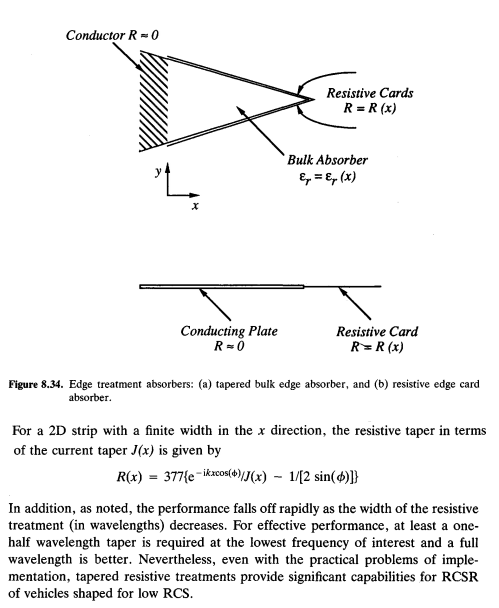

Last edited:
And here are the requirements for objects with low ESR in 1975. Not from memoirs, but from documents.
View attachment 649215

Last edited:
You make me laugh again.If you look at the chart just above that one for the fin same document, the much bigger uncoated metal wing actually have smaller RCS than the fin in certain aspect
The wing is horizontal, the fin is vertical! And if we compare their RCS then only by the angle zero. And as we can see, the larger wing has an RCS of 0.05, and the metal fin is -18 dB or 0.015. Ronny, you couldn't lie.
So you're saying that Boeing's research unit is just morons?If you look close enough, you will notice that your document came from Boeing in September 1975. Whereas, even the first phase of the XST program that Northrop Grumman and Lockheed Martin participated in didn't even start the first phase phase until November 1975, the prototype of both companies didn't go on the RCS test pole until 1976 and the Have Blue prototype only have its first flight in 1977.
Last edited:
If you look close enough, you will notice that I said: "the much bigger wing has lower RCS than the fin from certain angle", what do you think lead to the smaller RCS in these angle?.The wing is horizontal, the fin is vertical! And if we compare their RCS then only by the angle zero. And as we can see, the larger wing has an RCS of 0.05, and the metal fin is -18 dB or 0.015. Ronny, you couldn't lie.Why do you constantly take your interlocutor for an idiot?
The wing is always flat to the direction of threat because it is only considered in the azimuth while the fin only flat to the direction of threat when it is at 0 degree
But how come the metal fin at 0 degrees has RCS of 0.015 m2 but the much bigger non treated metal wing has RCS of 0.0015 m2 at 30 degrees azimuth
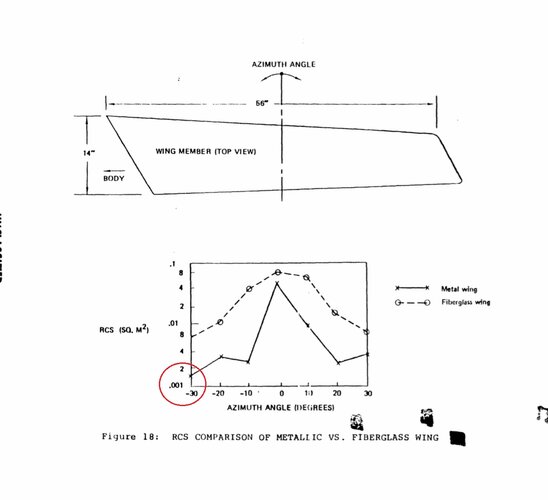
Because like I told you earlier, for small parts and small object (the wavelength is close to object size), the very significant backscattered is creeping wave return. In case of the wing, its trailing edge and leading edge is very closely matched in angle, so when you put azimuth at 30 degrees, both the specular return from leading edge and creeping wave return from trailing edge will be directed away from the threat direction. There is a small amount of reflection due to diffraction because this wing doesn't have edge treatment.
But in case of the fin, the trailing edge is perpendicular to the direction of the threat, so the creeping wave return will travel directly back to the source.
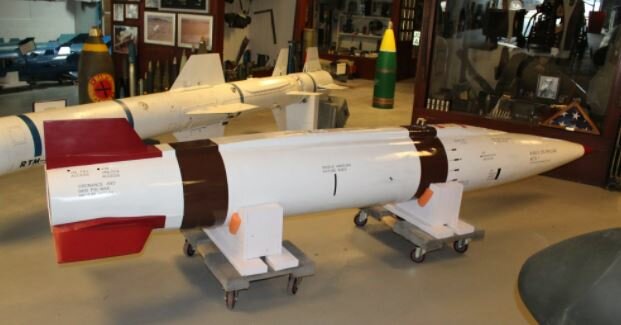
So you're saying that Boeing's research unit is just morons?


Boeing team are not morons, but even very smart people can make wrong prediction of future.
For example:

You basically use the RCS prediction from people who didn't make the stealth aircraft , at a time where no stealth aircraft exist and even before the program to deign a stealth aircraft even started.
- Joined
- 6 August 2007
- Messages
- 3,859
- Reaction score
- 5,795
And how can such an object have an EPR of -40 or even -50 dB?
Based on your comments it sounds like your hypothesis is that the RCS of a large object should be bigger than that of a small object - i.e. "a big thing should have a big RCS". Is that accurate?
- Joined
- 27 December 2005
- Messages
- 17,695
- Reaction score
- 26,042
All this says is RCS below 1 sq m for a manned aircraft requires you to consider the shape. Not really news.And here are the requirements for objects with low ESR in 1975. Not from memoirs, but from documents.
View attachment 649215
Open your eyes.If you look close enough, you will notice that I said: "the much bigger wing has lower RCS than the fin from certain angle", what do you think lead to the smaller RCS in these angle?.
The wing is always flat to the direction of threat because it is only considered in the azimuth while the fin only flat to the direction of threat when it is at 0 degree
But how come the metal fin at 0 degrees has RCS of 0.015 m2 but the much bigger non treated metal wing has RCS of 0.0015 m2 at 30 degrees azimuth.
The research was carried out in azimuth. Look at your own picture. There it is even indicated by "arrows".
The wing is oriented horizontally. That is, only the wing edge is exposed to radiation. And no matter how you rotate the wing in azimuth, only the edges will be visible.
The fin is oriented vertically. But the studies were also carried out in azimuth. The arrows also show the angle "theta". Therefore, when the fin rotates, not only the edge but also the plane of the fin itself will be visible.
Therefore, if we consider these two similar objects, then only from a zero angle.
You take, albeit similar objects, but differently oriented in space. And equate them.
Do not mislead those reading this topic.
Boeing was one of the first to deal with these issues (1962-1963). Read at least about the Boeing Model 853-21 Quiet Bird.You basically use the RCS prediction from people who didn't make the stealth aircraft , at a time where no stealth aircraft exist and even before the program to deign a stealth aircraft even started.
Based on your balls and peas.Based on your comments it sounds like your hypothesis is that the RCS of a large object should be bigger than that of a small object - i.e. "a big thing should have a big RCS". Is that accurate?
Or does your pea still have a higher RCS than a golf ball?
- Joined
- 6 August 2007
- Messages
- 3,859
- Reaction score
- 5,795
Based on your balls and peas.Based on your comments it sounds like your hypothesis is that the RCS of a large object should be bigger than that of a small object - i.e. "a big thing should have a big RCS". Is that accurate?
Or does your pea still have a higher RCS than a golf ball?
Let me help you out here. There seems to be some confusion.
When someone says "an RCS of 1 m2 in X-band" that means "and RCS equivalent to a 1m2 sphere". So an RCS of 0.0001 (or whatever) m2 is equivalent to a very small sphere. To make it easier to visualize how big that sphere is, a common object of equivalent size is used for comparision. For example, a golf ball or a ball bearing.
When someone says the RCS of the F-35 (or whatever) is "the size of a golf ball", that means the RCS value is equivalent to a sphere of that size - not the RCS of an actual golf ball (or pea, ball bearing, whatever).
- Joined
- 6 August 2007
- Messages
- 3,859
- Reaction score
- 5,795
Boeing was one of the first to deal with these issues (1962-1963). Read at least about the Boeing Model 853-21 Quiet Bird.
No, they were not.
The Quiet Bird was first publically discussed and shown on this very forum. The Quiet Bird - like most other stealth aircraft of that period - relied on RAM and a very limited amount of shaping. While that may have been state of the art in the 1960s, in the mid 1970s that all changed.
On or about 1975:
- It became possible to predict the RCS of complex shapes, which allowed the design of shapes with much, much lower RCS that previously possible.
- It became possible to build aircraft that would have previously been "unflyable"
- The XST program set a very aggressive RCS goal, and caused a change in how the aircraft were designed. Signature became more important than aero. Lockheed and Northrop designed very low signature shapes and then figured out how to make them fly. Previously it had been the other way around.
- The ability to accurately predict RCS also triggered changes in how radar cross section was measured (range design had been corrupting / inflating measurements and no one knew it until this point).
The Boeing guys did not know any of this until they started participating in the ATB program.
I didn't miss read anythingOpen your eyes.If you look close enough, you will notice that I said: "the much bigger wing has lower RCS than the fin from certain angle", what do you think lead to the smaller RCS in these angle?.
The wing is always flat to the direction of threat because it is only considered in the azimuth while the fin only flat to the direction of threat when it is at 0 degree
But how come the metal fin at 0 degrees has RCS of 0.015 m2 but the much bigger non treated metal wing has RCS of 0.0015 m2 at 30 degrees azimuth.
The research was carried out in azimuth. Look at your own picture. There it is even indicated by "arrows".
The wing is oriented horizontally. That is, only the wing edge is exposed to radiation. And no matter how you rotate the wing in azimuth, only the edges will be visible.
The fin is oriented vertically. But the studies were also carried out in azimuth. The arrows also show the angle "theta". Therefore, when the fin rotates, not only the edge but also the plane of the fin itself will be visible.
Therefore, if we consider these two similar objects, then only from a zero angle.
You take, albeit similar objects, but differently oriented in space. And equate them.
Do not mislead those reading this topic.
I took the value at 0 degree for the fin because that when only the edge is exposed
For the wing, I can take any value because it is only rotated in azimuth
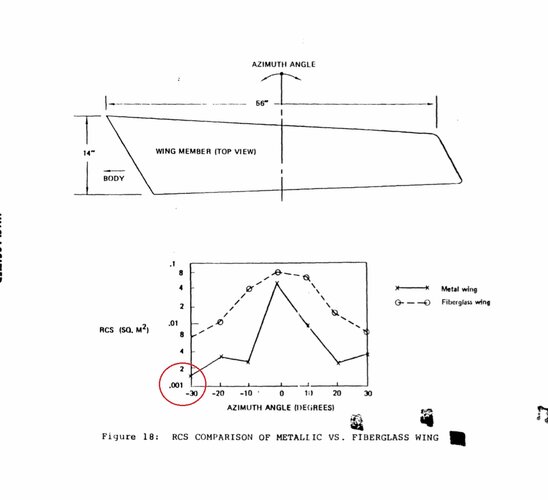
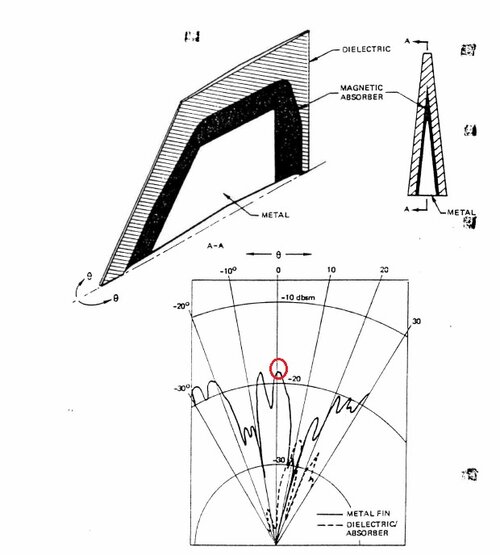
Boeing was one of the first to deal with these issues (1962-1963). Read at least about the Boeing Model 853-21 Quiet Bird.
and this is Boeing design
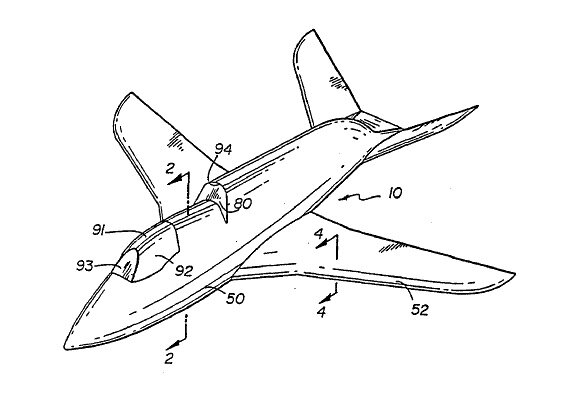
Last edited:
Oh my God. Take an A4 sheet and look at it, let's say at an angle of 60 degrees. How much has the leaf area decreased? If you do not understand on this simple analogy, then I am powerless to explain.I didn't miss read anything
I took the value at 0 degree for the fin because that when only the edge is exposed
For the wing, I can take any value because it is only rotated in azimuth
so tell me, how come the much bigger metal wing has more than 10 times smaller RCS than the fin when the azimuth of the wing is 30 degrees and the azimuth of the fin is 0 degree if not for the reason I stated
Can you link to this? Otherwise, all sources say otherwise.they couldn't generate RCS low enough to make Military have interest
"The tests reportedly achieved excellent results in reduced radar cross section, but it was a bit ahead of its time and did not generate interest from the military."
I've heard that before. You have now specified the wavelength. Specify the angle too?Let me help you out here. There seems to be some confusion.
When someone says "an RCS of 1 m2 in X-band" that means "and RCS equivalent to a 1m2 sphere". So an RCS of 0.0001 (or whatever) m2 is equivalent to a very small sphere. To make it easier to visualize how big that sphere is, a common object of equivalent size is used for comparision. For example, a golf ball or a ball bearing.
When someone says the RCS of the F-35 (or whatever) is "the size of a golf ball", that means the RCS value is equivalent to a sphere of that size - not the RCS of an actual golf ball (or pea, ball bearing, whatever).
I will take your word for it that Boeing slept all this time. His work in 1975 seemed to me quite competent.The Boeing guys did not know any of this until they started participating in the ATB program.
- Joined
- 27 December 2005
- Messages
- 17,695
- Reaction score
- 26,042
"Quiet Bird" was a reduced RCS design, not Stealth. They've avoided major RCS spikes with engine compressor face and some other things, but they haven't really optimised the design's shape to lower RCS in say the front quadrant. Its probably reasonably low in most directions, but not very low in any direction.
- Joined
- 27 December 2005
- Messages
- 17,695
- Reaction score
- 26,042
Can you link to this? Otherwise, all sources say otherwise.they couldn't generate RCS low enough to make Military have interest
"The tests reportedly achieved excellent results in reduced radar cross section, but it was a bit ahead of its time and did not generate interest from the military."
Well, the only article on Boeing Quiet Bird I'm aware of was Tyler Rogoway's
"Boeing Images puff piece" for Foxtrot Alpha, where the only source information was the photos and captions from Boeing, all documentation apparently being destroyed, so "all sources" is a bit misleading. The fact it was a fixed wing Army project pretty much guaranteed it went nowhere.
Last edited:
Oh my God. Take an A4 sheet and look at it, let's say at an angle of 60 degrees. How much has the leaf area decreased? If you do not understand on this simple analogy, then I am powerless to explain.I didn't miss read anything
I took the value at 0 degree for the fin because that when only the edge is exposed
For the wing, I can take any value because it is only rotated in azimuth
so tell me, how come the much bigger metal wing has more than 10 times smaller RCS than the fin when the azimuth of the wing is 30 degrees and the azimuth of the fin is 0 degree if not for the reason I stated
The leading edge of SRAM fin make a 53 degrees with the threat radar if we assume the threat is straight ahead
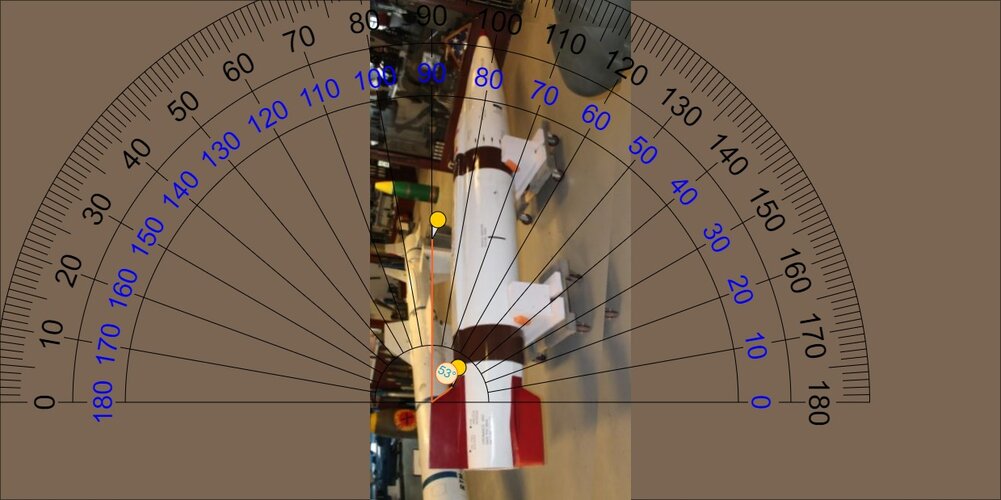
For the metal wing, when we choose azimuth angle at 30 degrees, the leading edge will make 57 degree with the threat radar
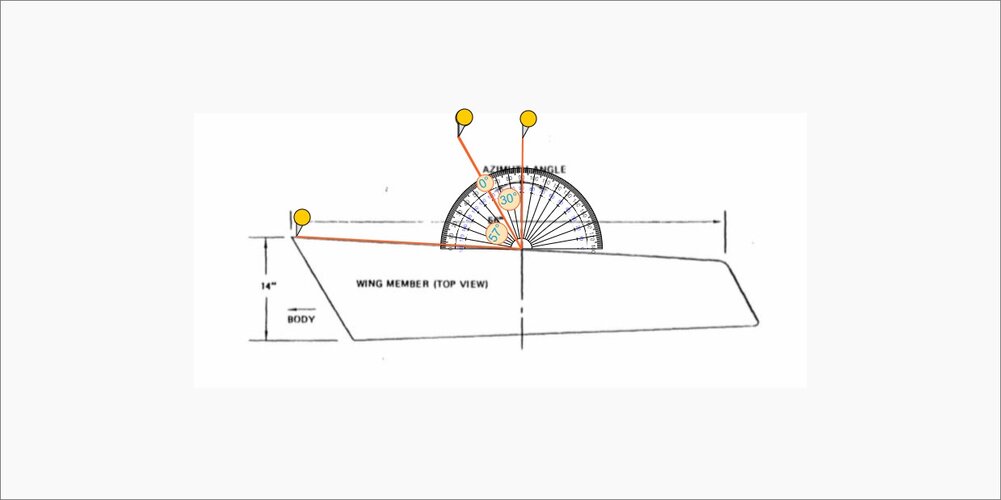
Don't forget that we are talking about the angle between the radar ray and the leading edge, so the smaller this angle is, the more radar ray will be deflected away from the threat direction . In case you don't understand, this is an illustration

So tell me, if not for the reason that I explained earlier then how come the big metal wing has an order of magnitude smaller RCS than the small SRAM fin, even though the angle that the wing make with the threat radar is bigger and it is also physically bigger?
All sources as in there are some picture from Tyler and everyone plagiarism him words for words?Can you link to this? Otherwise, all sources say otherwise.
"The tests reportedly achieved excellent results in reduced radar cross section, but it was a bit ahead of its time and did not generate interest from the military."
They did good for someone who didn't have capability to accurately predict RCS, but to compare what Boeing could achieve at that time with what Lockheed Martin could achieve later on is like comparing apple to mountain
Well, I'm not talking about a "quiet bird". Boeing engaged in stealth? Yes, he was one of the first. Therefore, it is not serious to say that they are generally backward. Yes, their plane was probably inferior, but it was also 10-12 years older. For its time, probably, there was a good plane. But this is not the main thing. I'm not going to pretend to be all-knowing, like some, but their 1975 document looks serious enough. Northrop, in his book on the B-2, also refers to the work of the Boeing on SRAM. Again, if my memory serves me, then DARPA finally formed its stealth criteria at the end of 1974. The estimates in the Boeing document may well be DARPA data. Maybe based on their work and their vision. I dont know. But they do exist. And why not take them into account.Well, the only article on Boeing Quiet Bird I'm aware of was Tyler Rogoway's
"Boeing Images puff piece" for Foxtrot Alpha, where the only source information was the photos and captions from Boeing, all documentation apparently being destroyed, so "all sources" is a bit misleading. The fact it was a fixed wing Army project pretty much guaranteed it went nowhere.
Similar threads
-
-
WEarly Stealth? 'Means for altering the reflection of radar waves' (US 2436578)
- Started by Wingknut
- Replies: 2
-
-
Design Challenge: Lightweight Multirole Fighter (LMF)
- Started by VTOLicious
- Replies: 506
-

